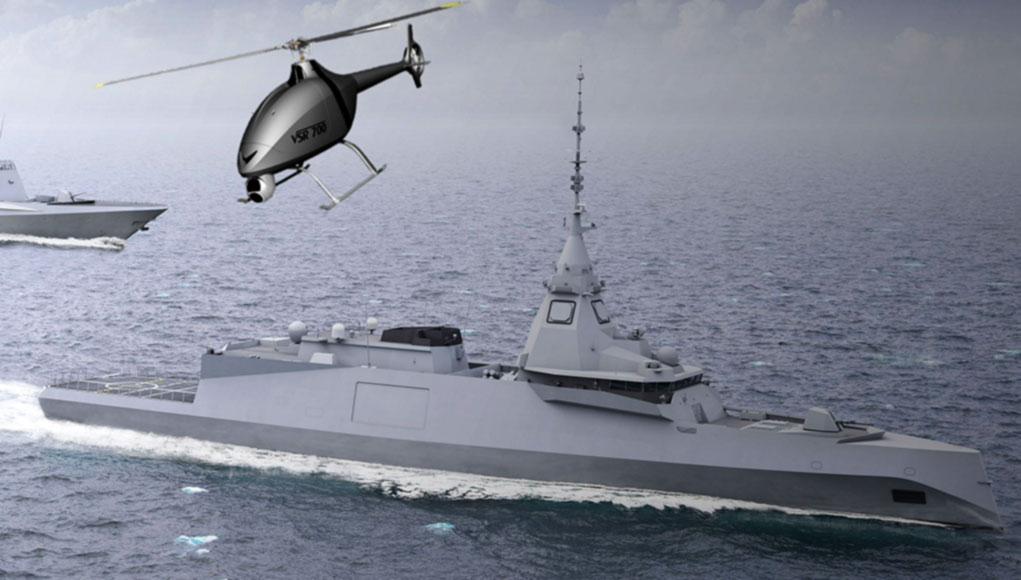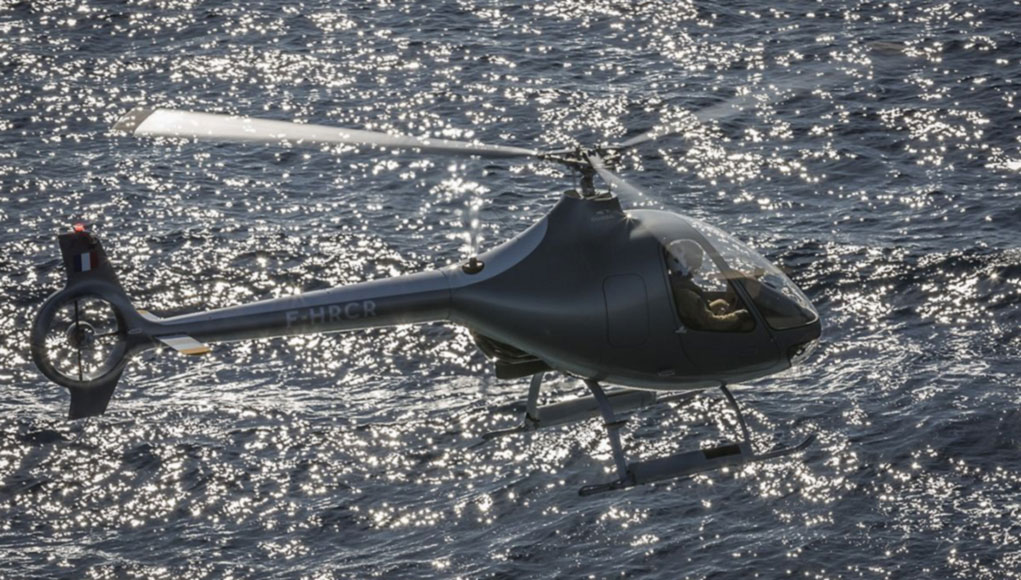Airbus is developing a rotary-wing unmanned aerial system for naval application, under a newly awarded contract signed with the French Armament Directorate (Direction Générale de l’Armement – DGA), the Naval Group and Airbus Helicopters consortium. The contract covers risk reduction studies ahead of construction of a future, tactical helicopter drone demonstrator to be tested aboard warships. The demonstration project will lead to trials of the drone launch system, mission system and airborne vehicle, conducted from a French Navy vessel.
The platform proposed for this demonstration Based is the VSR700 drone system being developed by Airbus Helicopters. This 700-kg drone, derived from the Cabri G2 light civilian helicopter, is a certifiable, autonomous flight systems designed for naval operations. In June 2017 Airbus began autonomous flights tests using an unmanned Cabri G2 prototype, validating the integration of the flight control systems and the vehicle’s new engine system, paving the way for the first flight of the VSR700 in 2018.
The project is part of the Navy Airborne Drone System (SDAM), to be employed aboard the future Intermediate-Size Frigates (FTIs) expected to enter service by the middle of the 2020s, as well as other naval ships operated by the French Navy ships. The new drone will be used as a technology demonstrator to assess the technical risks associated with the SDAM program and the vessel-drone integration and select the principal technologies for the program.

Naval Group and Airbus Helicopters will jointly be responsible for the industrial project management and shall coordinate wider input from French industry/sector. The two companies will jointly act as the programme design authority and shall have Hélicoptères GUIMBAL, Thales Systèmes Aéroportés, Safran E&S and ONERA as their principal subcontractors.
The VSR700 can exceed 10 flight hours of operational autonomy with a payload capacity of up to 150 kg, offering performance levels that have, until now, been the reserve of aircraft of a significantly higher category and size. The system will benefit from all the know-how of Airbus Helicopters in terms of automated flight control (the guarantee of a unique automatic deck-landing capacity in rough seas), autonomous navigation system, secure data link, the integration of sensors such as radar and optronic systems, the management of complex mission systems and the certification of military aircraft. This expertise, which builds on a heritage going back more than 70 years, allows Airbus Helicopters to design a drone system that precisely meets the needs of the French Navy. The aerial vehicle has low maintenance requirements and strong synergies with the ships existing logistical footprint, thus limiting support and operations costs, while its compact size is compatible with the simultaneous use of an on-board helicopter across different surface ships.




















